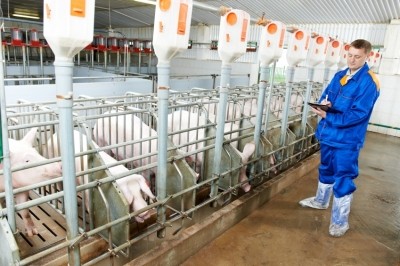Feed sector welcomes FDA guidance on nanoparticles

The final guidance from the US Food and Drug Administration (FDA) on nanotechnology applications in feed was released last month.
Animal feed can include nanoparticles, but should offer safety data, said agency officials.
Richard Sellers, senior vice president of legislative and regulatory affairs at the AFIA, told us the guidance will help ensure a smooth approval system.
Guidance only
The new information, however, does not constitute a set of rules or regulations, said the FDA. Instead the work was produced as a set of guidelines that illustrate the agency’s current understanding on the topic.
“This guidance describes the FDA’s current thinking regarding the use of nanomaterials or the application of nanotechnology in food for animals,” the organization wrote. “It is intended to help industry and other stakeholders identify potential issues related to the safety or regulatory status of food for animals containing nanomaterials or otherwise involving the application of nanotechnology.”
Chemical composition
When changes are made to products at the nanoscale level, even if the chemical composition of the additive or food ingredient stays the same, manufacturers should have evidence that the altered substance remains safe, added the US agency.
Changes brought about through that level of development may be different than for unaltered material even with the same chemical composition, wrote FDA officials.
“In such cases, manufacturers should conduct safety assessments that are based on data and information relevant to the nanomaterial version and not rely entirely on the data and information used to determine the safety of a larger-scaled material with the same chemical composition,” they said.
Additionally, the designed product should be shown safe in all the mediums where it would be incorporated and for use by both the specific animal and humans.
The agency also recommended that manufacturers contact the FDA’s Center for Veterinary Medicine (CVM) at the early stages of development to address questions regarding the product’s safety and to make the approval process run more smoothly.
Detailed suggestions
The FDA reported that it has not set “regulatory definitions of ‘nanotechnology, nanomaterial , nanoscale,” but is examining if the product has either an external dimension or internal structure in the range of 1 nm to 100 nm, or if the product has been designed to have properties that relate to its size.
“FDA does not categorically judge all products containing nanomaterials or otherwise involving the application of nanotechnology as intrinsically benign or harmful,” officials said. “Rather, for nanotechnology derived and conventionally-manufactured animal food products alike, FDA considers the characteristics of the finished product and its safety for its intended use.”
The level of alteration may mean it has different “biodistribution, biocompatibility, or toxicity” as the way or rate of absorption or distribution throughout a body may have changed, reported the agency. Additionally, the amount of the substance needed to produce the same effect could be different.
“Similarly, two animal food ingredients of the same chemical composition, but of different particle size, shape, or other morphological feature, may exhibit different physicochemical properties,” agency officials said. “For example, some tea polyphenols are anti-oxidants in their bulk form, but the same tea polyphenols are pro-oxidants in their nanoscale form.”
Distinctions drawn by the guidelines
The guidelines do apply to medicated feeds, said the FDA, however, they don’t apply to the medication in the feed, just the feed portion. They also don’t apply to nanomaterial that either previously existed on the nanoscale, including microorganisms or proteins, or that only contain a small amount of such a material.
“We recognize that conventional manufacturing processes, such as milling or general combustion, may sometimes result in the animal food containing particles of varying sizes, including particles in the nanoscale range,” the agency said. “This guidance is not intended to apply to the incidental presence of particles in the nanoscale range that may occur in animal food as a result of conventional manufacturing processes.”















